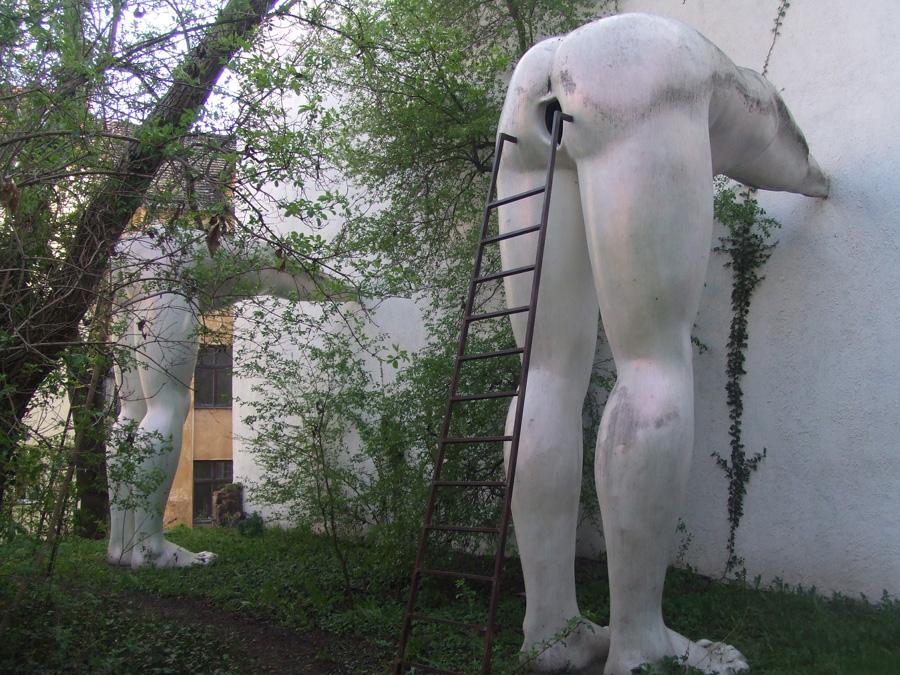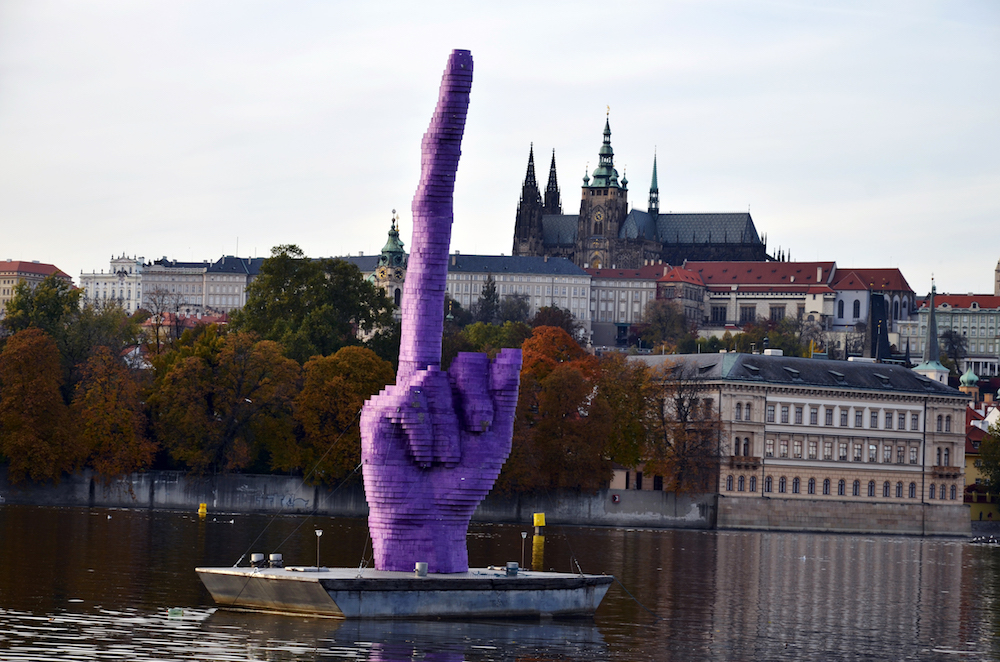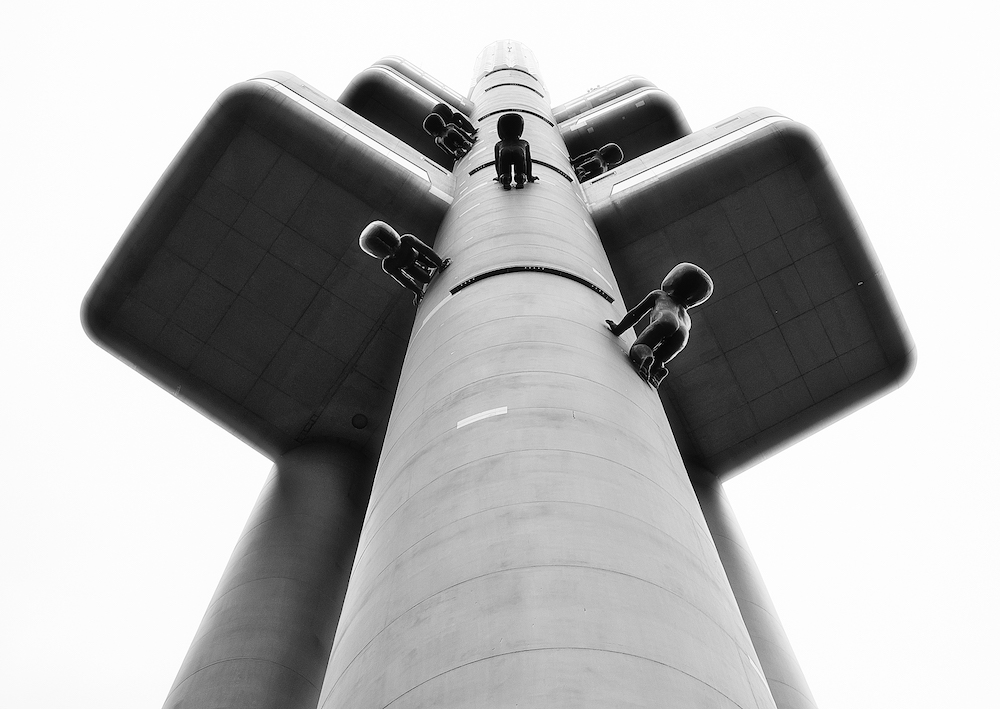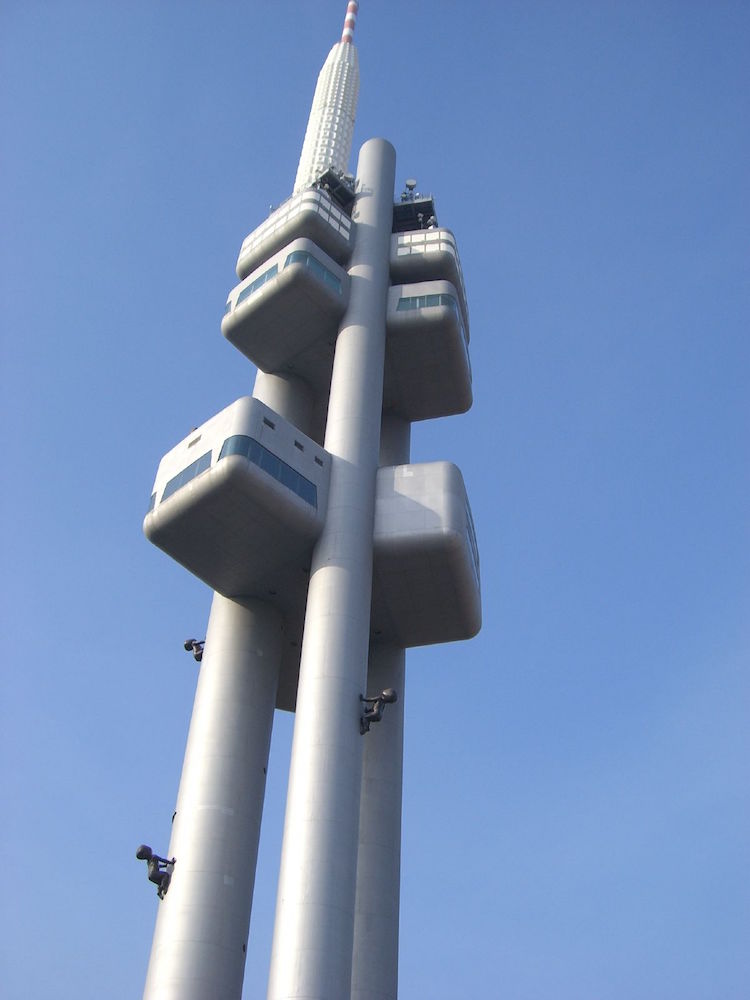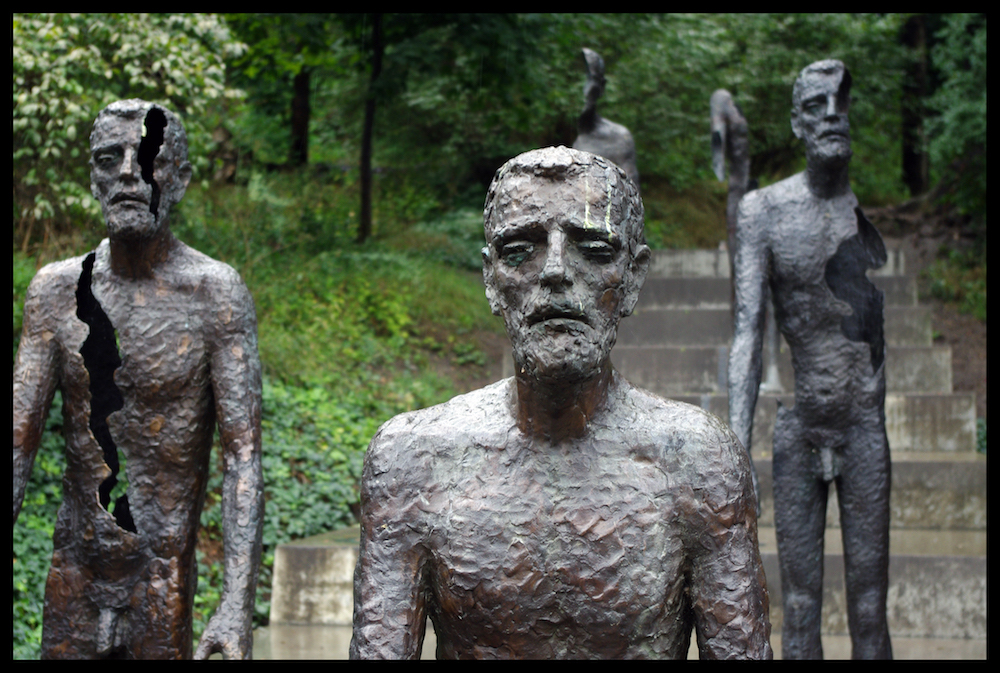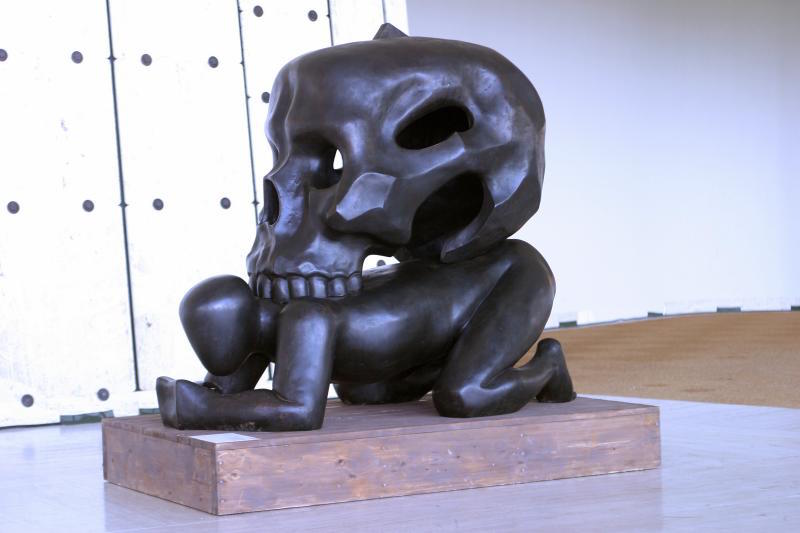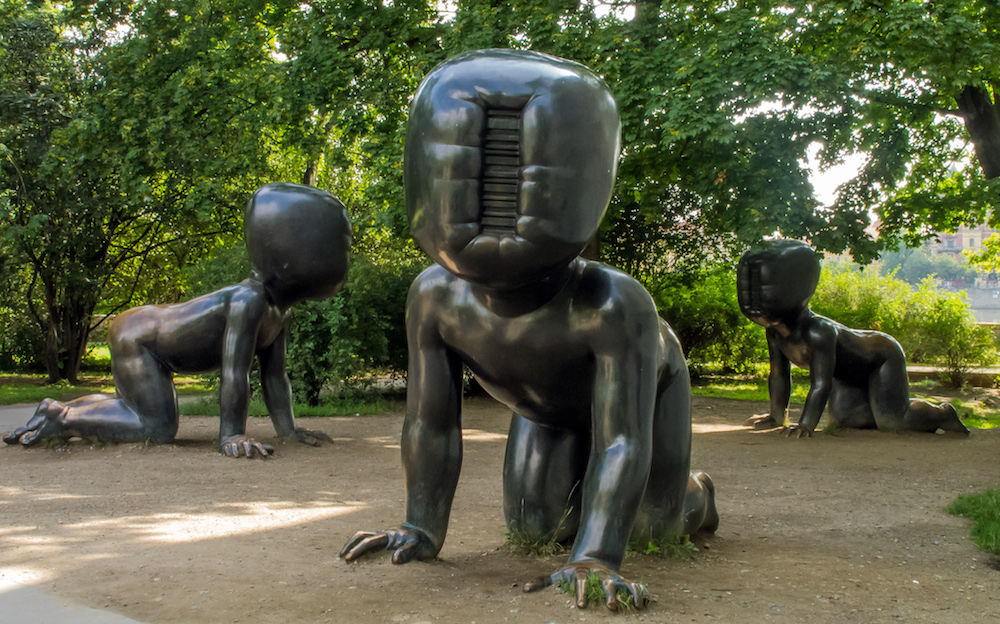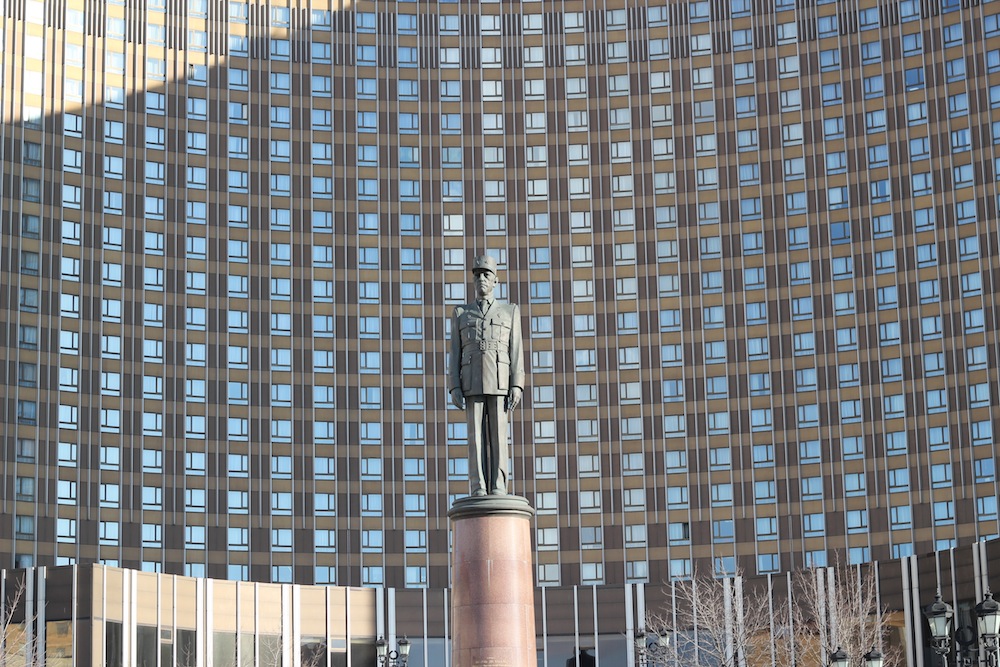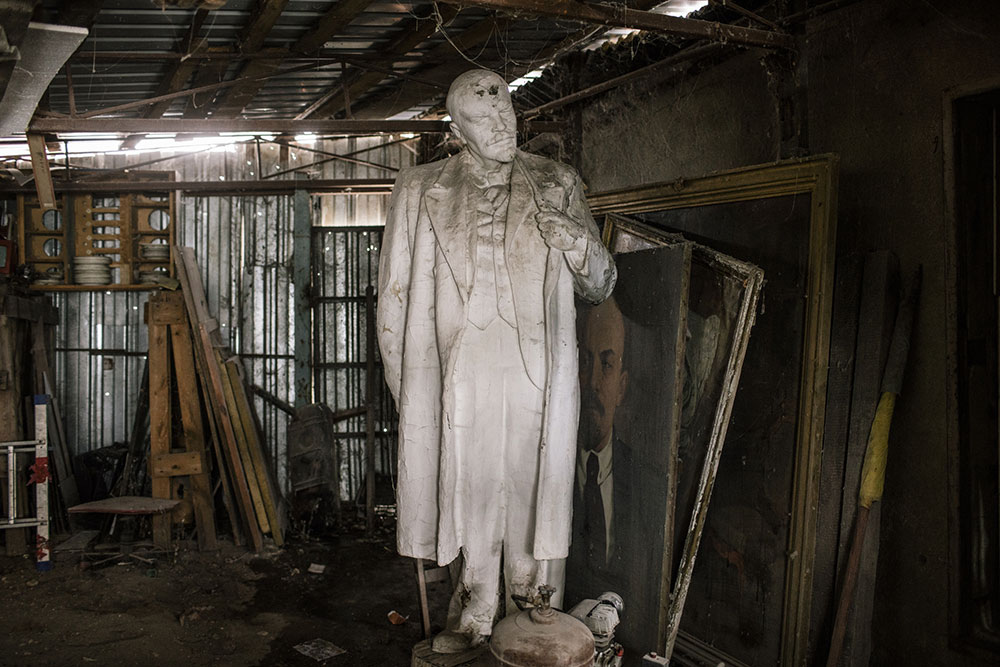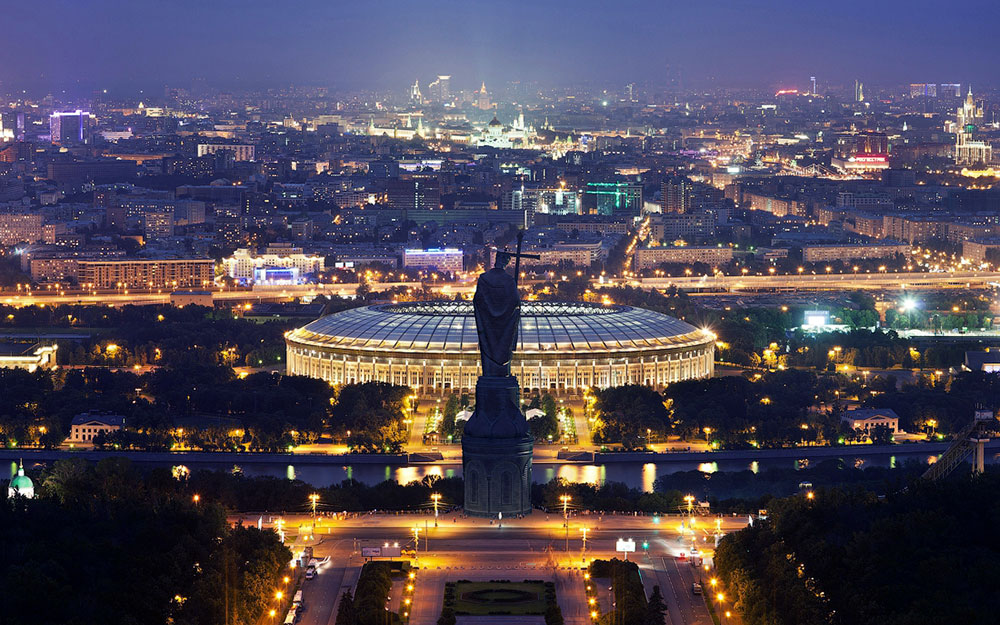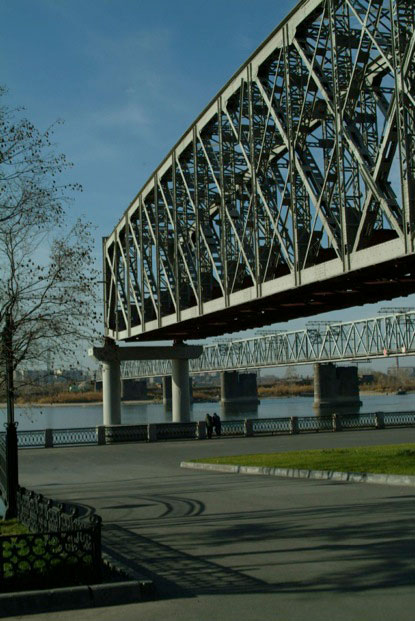Statues of liberty: the weird, subversive sculpture of 21st century Prague
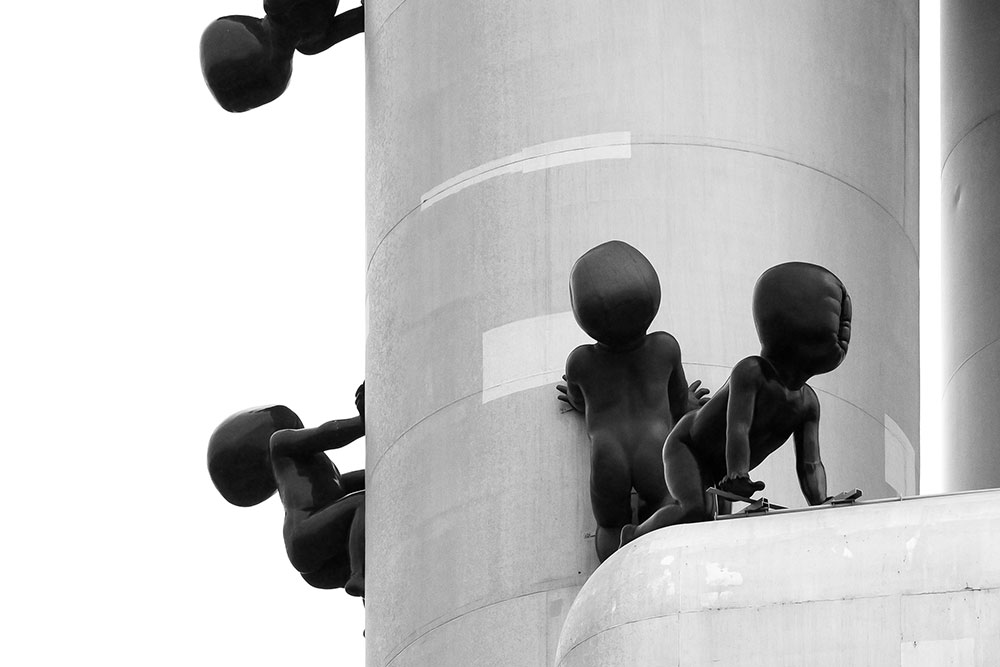
In Eastern Europe, memories of the Soviet era persist in the form of monuments and statues. In Prague, however, a new tradition of ironic and often shocking sculpture has begun to challenge that legacy. Owen Vince explores the meaning behind the Czech capital's provocative installations
The Alfons Mucha Gallery, a short walk from Prague’s often heaving Wenceslas Square, features a series of high, white rooms which terminate in a projection of a cutely outdated documentary on the life of the Czech Republic’s most famous, and arguably most global, artist. The gallery walls are lined with originals and reproductions of the works of Mucha, the native father of Art Nouveau; of Czech and Moravian women, robes flowing across bare shoulders; or the startled, ashen face of Medea, knife red with the blood of her own children. Cigarette boxes and sporting posters hang alongside art prints and exaggerated scenes from national mythology. You come away thinking that it’s just all very… tasteful.
If you travel to the other side of Prague, to a plain and tree-lined courtyard in the city’s Smichov district, you’ll catch sight of something that is radically different, yet no less Czech: two plaster bodies, their legs spread widely apart, appear to bend at right angles at the hip. These massive torsos — over 17 feet high — have been sharpened to tight points which penetrate the far wall. There’s no obvious reason they should be here; no indication from outside the courtyard of what the space inside contains (in truth, it forms part the Futura Gallery). I watched a man climb the ladder between one of the sculpture’s legs and place his entire head into the sculpture’s gaping backside. Within, you’re treated to a video of two politicians feeding each other slops while accompanied by a backing track of Queen’s We are the Champions. Obviously.
These two statues have come to typify a new wave of ironic and gleefully corporeal sculpture in the former Czechoslovakia. This pair were designed by artist David Cerny, whose sculptures and installations have spread across the city over the past two decades. These include a pair of mechanical bodies pissing into a Czech-shaped pool of water (2004’s Two Peeing Guys) and Nation To Itself Forever (2002)– a giant golden male, clasping his cock and pissing water onto the streets below, which was attached temporarily to the National Theatre.
And Cerny is not alone; in 2001 he founded the art space and workshop Meet Factory, which sits alongside the industrial yards of the Smichov quarter. This has been one of many bases from which a group of younger, experimental, and increasingly provocative artists have sallied out into the city, transforming its picture-postcard looks into a space for transformative and often highly shocking public installation; a sculpture toward alterity. Others include the unnerving Memorial to the Victims of Communism, in which Olbram Zoubek’s series show a figure “disintegrating” until there is only a pair of legs remaining. In contrast to the coherent bodies of the historical statuary of the Charles Bridge, these present sculpture as a body against form, against coherence and vitality.
I watched a man climb the ladder between one of the sculpture’s legs and place his entire head into the sculpture’s gaping backside
The work of Cerny and his contemporaries represents an art that is not only confidently public, but also socially and politically confrontational. One of the last buildings to be commissioned before 1991 was the Žižkov TV and Radio Tower in Prague 3, which was only finally completed after the Velvet Revolution in 1989. Later, Cerny would install a series of shining, over-sized black ceramic babies which seem to crawl — defying gravity — across the tower’s silver. These were eventually removed, yet a public campaign convinced the authorities to reinstall the statues permanently. Today, this obtuse signifier of Soviet futurism — and of state surveillance — has been permanently estranged and made ridiculous by the frozen forms of these sculptures which smother its otherwise space-age form. Similarly subversive was the fake supermarket built by filmmakers Vit Klusák and Filip Remunda for their 2004 film Czech Dream, where thousands were invited to attend the centre’s grand opening only for it to be revealed that the entire structure was a hoax — little more than a facade of canvas backed by scaffolding.
It’s no understatement that monuments have come to define post-Soviet public space in the former USSR — Lenin, workers, soldiers. They represent the most visible, material manifestation of Soviet influence over its former satellites. And this, of course, was the point. In the Czech Republic, artists have exploited the wealth of this symbolic potential by accepting the inherently political nature of putting a sculpture in a public space; but, rather than choosing bearded politicians in naturalistic poses, they have designed grossly obscure forms which revel in their own difference. For Cerny, this reflects the Czechs’ own sense of irony, their ability to “tolerate unbelievable things”. This represents a step-change from the abstract, albeit appealing, blandness of pre-1991 public sculpture in the city, which gave rise to often formally interesting abstract works, but works that also had to bury their significance and symbolic referencing; typical is Jiři Novák’s work, which includes a series of interlocking, grazed triangles, squares and circles set into the wall of a public building.
These are works which curator Tomas Pospiszyl describes as “homeless”. Today, the visual bluntness of many Czech artists can be read as a salvaging of this formerly suppressed vocalism — a way of saying, “Now we can speak, so we’ll scream.” Cerny’s obvious, albeit contrasting, predecessor is Jiří Kovanda, who was producing taboo-breaking installations in Prague even during the 1970s and 80s when most contemporary artists had been driven underground. The transient nature of these interventions was a defence mechanism: to ensure that what was made — temporarily — could also be made absent by the artist’s own hand, a way of “owning” the inevitable back-lash that would follow.
The visual bluntness of many Czech artists can be read as a way of saying, “Now we can speak, so we’ll scream”
For Kovanda, this included his 3 September 1977 intervention titled Contact where he “gently bumped into fellow pedestrians in Wenceslas Square”. Cerny, not constrained by the need to minimise and make absent, has made his works intensely, obviously “present”. The same can be said of Dušan Zahoranský — with his physical, text-based installations such as Wish — or Jaroslav Róna’s disturbing and pessimistic cast bronze figures of authors, skulls, children, and angels.
Similarly, in 2012, he arranged for a giant, purple hand to be rowed down the Vltava River — its middle finger raised, gigantic and swollen. The gesture was aimed squarely at President Miloš Zeman and his then newly assembled government (it was titled FUCK Him). While the statue was, inherently, transient, a temporary gesture into the city, it was capable of entirely subverting a more stable, historically grounded architectural and public space; it disrupted the “gaze” through which Prague, the Charles Bridge, and the elegant Vltava River, are seen and reproduced by myriads of tourists and locals.
Cerny’s most provocative work, and arguably his most unmistakable, is a giant, revolving, interlocking head which sits outside of the offices of the city council. Installed in 2014, its unbearable chrome, combined with the unexpected pulses of its disassembly and reformation, project a continuous twisted presence into these offices of reputed democratic accountability. The head — supposedly that of native writer Franz Kafka — consists of 42 layers of interlocking, shifting metal, a signifier of the mental dislocation to which Kafka suffered and that is projected in his writing. It’s as if the sculpture were reminding the councillors of the perilous destruction that urban inhabitants can suffer at the hands of bureaucracies.
Since first encountering the strangely exposed nerve of Cerny’s work — the two “pissers”, on a soft spring afternoon in 2015 — I’ve wanted to understand why the deliberate and artistically rich opposition between the historic and the “now” are so firmly consolidated in the city’s cultural imagination, where historic cast-bronze horsemen must necessarily jostle for space alongside monuments to historic cruelty, political wrongdoing, and cultural slapstick, in a plastic carnival of ambiguous bodies and luckless heroes which serve to invert and disorder any attempt to create an overarching political narrative of the city and the state. In their inherently strange presence they serve as screams, proclamations, and reminders shouted from the “idea” of the public into its own ear; a reminder not to take things too seriously, but also to take them very seriously indeed.
